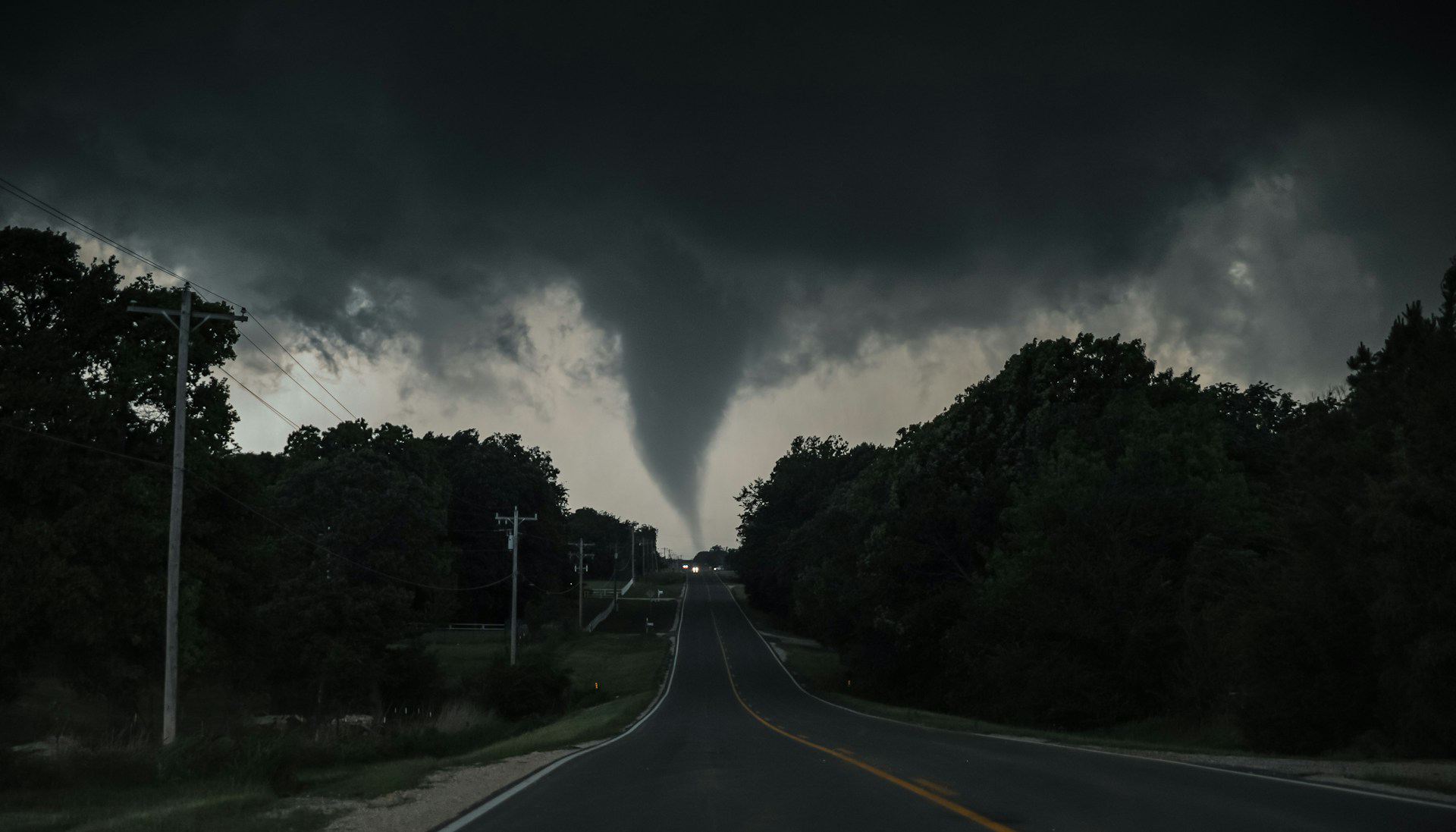When tornado season approaches, ensuring your home is equipped to handle severe weather can make a life-saving difference. While no building is entirely tornado-proof, certain design features and reinforcements can make your home more resilient.
This guide walks you through practical steps to increase your home’s resistance to tornadoes and help protect what matters most.
Don’t forget to claim your free survival ebook today! We share tips on surviving hurricanes, tornadoes, and other natural disasters. Keep your family safe and subscribe now for your free guide!
Reinforce Your Roof
One of the most vulnerable parts of any building in a tornado is the roof. Tornado-resistant homes often start with a securely reinforced roof designed to stay in place under high winds. Here’s how:
- Hurricane Clips and Straps: These metal fasteners attach the roof securely to the walls, giving it extra hold during severe winds.
- Heavy-Duty Shingles: Impact-resistant shingles can withstand both high winds and flying debris, reducing the risk of roof damage.
Quick Tip: For new builds or renovations, consider a hip roof, which has sloped sides that reduce wind pressure compared to traditional gabled roofs.
Fortify Doors and Windows
Strong winds and flying debris can shatter windows and doors, creating dangerous entry points for high winds to enter and compromise your home. Fortify these weak spots with:
- Impact-Resistant Windows: These windows are specially designed to withstand strong winds and impacts, reducing the chance of shattering.
- Storm Shutters: Shutters can be closed over windows to protect the glass and prevent flying debris from causing damage.
- Reinforced Doors: Use solid wood or metal doors, and ensure they have three hinges and a deadbolt lock to increase their resistance.
Extra Tip: Consider installing braces on your garage door, as it’s one of the most vulnerable entry points in high-wind situations.
Strengthen Exterior Walls
Reinforcing the exterior walls of your home can significantly boost its resilience during a tornado. Here are some ways to strengthen your walls:
- Concrete or Reinforced Block Walls: These materials offer more strength and durability compared to traditional wood framing.
- Braced Wall Panels: Adding braced wall panels or shear walls can help distribute wind loads across your home, reducing strain on individual walls.
- Anchor Bolts: Anchor bolts secure the walls to the foundation, helping prevent them from being lifted by strong winds.
Create a Safe Room
In the event of a direct tornado hit, a safe room is your best defense. Ideally, this should be a room on the lowest level of your home, away from windows and exterior walls. For maximum protection:
- Reinforced Walls and Ceiling: Safe rooms are often built with reinforced concrete or steel for added strength.
- Install a Sturdy Door: Use a heavy, tornado-rated door with secure hinges and a deadbolt lock.
- Stock It with Emergency Supplies: Keep essentials like water, food, flashlights, and a first-aid kit in your safe room.
Quick Tip: If you’re building a new home, consider incorporating an underground or interior safe room into the design.
Secure Outdoor Structures and Objects
Flying debris is one of the leading causes of tornado-related injuries and damage, so it’s essential to secure outdoor structures and objects. Here’s how:
- Anchor Sheds and Patio Furniture: Use ground anchors or remove lighter items entirely before a storm.
- Trim Trees and Remove Dead Branches: Regularly prune trees and remove weak or dead branches that could break off in high winds.
- Use Metal Fencing: Metal fences tend to hold up better than wood under extreme wind conditions.
Extra Tip: Have a checklist for securing outdoor items quickly when you know a storm is approaching.
Use Tornado-Resistant Building Materials
Tornado-resistant building materials add strength to your home’s structure, helping it withstand stronger winds. When building or renovating, consider:
- Insulated Concrete Forms (ICFs): These provide a sturdy, insulated base for walls, increasing resistance to both wind and debris.
- Fiberglass Doors: More resilient than wood or metal, fiberglass doors are impact-resistant and better suited to withstand severe weather.
- Metal Roofing: A metal roof can often withstand higher wind speeds than asphalt shingles, adding an extra layer of protection.
Tip: Discuss tornado-resistant materials with your contractor or builder if you’re constructing a new home in a tornado-prone area.
Know Your Community’s Building Codes
Building codes can vary significantly by location, but many tornado-prone regions have specific codes in place to protect homes against extreme weather. Make sure your home meets or exceeds these requirements:
- Review Local Building Codes: Many areas have updated codes with requirements for wind-resistant construction.
- Hire a Licensed Contractor: A contractor familiar with local regulations can help ensure your home is as tornado-resistant as possible.
Extra Tip: Even if your area doesn’t mandate tornado-resistant measures, consider adopting these best practices to enhance safety.
Final Thoughts
Making your home tornado-resistant requires thoughtful planning and the right materials, but it’s a worthwhile investment in safety. Implementing these changes can reduce the risk of damage during a tornado and give you peace of mind during storm season.
Remember, preparation is key, and even small improvements to your home’s structure can make a big difference. Anticipating a hurricane in your area? Check out our guide to hurricane prep here.




